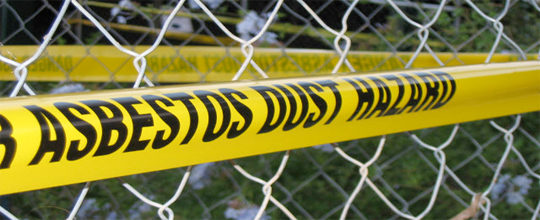Many Americans understand asbestos is dangerous, but few are aware that previous asbestos exposure occurrences have impacted a significant portion of today’s senior citizens with asbestos-related diseases.
Up until the 1980s, asbestos was unregulated and used in a number of occupational settings. It was also used in home and commercial construction as well as all branches of the U.S. military. Praised for its ability to insulate and fireproof materials at a low cost, asbestos was incorporated into thousands of products that still present exposure risks today.
Why is Asbestos Dangerous?
Any disturbance to asbestos-containing materials can cause microscopic asbestos fibers to become airborne. If inhaled, these fibers can become lodged in the lining of the lungs and remain there for many years. Over time, if enough exposure occurs, the irritation caused by the fibers can cause lung cancer, asbestosis or mesothelioma cancer.
These conditions typically develop in people over the age of 55 and symptoms can take between 15 and 50 years to arise from the time of someone’s first exposure. Those who worked at a job that exposed them to asbestos over a period of years may be at risk for an asbestos-related disease.
Occupational Asbestos Exposure
Occupational asbestos exposure was highest between the 1930s and 1970s, placing many of today’s seniors at risk for developing mesothelioma cancer or any other asbestos-related disease. Some of the occupations that provided the biggest sources for asbestos exposure included:
- Miners
- Electricians
- Factory workers
- Shipyard workers
- Construction Workers
- Automotive Mechanics
Occupational exposure accounts for the highest portion of the estimated 3,000 mesothelioma cases that arise each year in the United States.
Exposure around the Home
Much of today’s seniors have lived in their current residences for many years. Unfortunately, older homes (specifically those built before the 1980s) were constructed with asbestos-containing materials. If you occupied your home during a remodel or performed do-it-yourself projects that disturbed asbestos, exposure may have occurred.
Some of the most common locations for asbestos around the home include:
- Walls
- Attics
- Roofs
- Floors
- Ceilings
- Basements
Some of the most common asbestos-containing products around the home include:
- Drywall
- Pipe insulation
- Attic insulation
- Exterior siding
- Popcorn ceilings
- Vinyl floor tiles
- Roofing and flooring materials
Veterans at Risk
Many veterans of the U.S. military have contracted an asbestos-related disease after being exposed to the toxic mineral during their service. Exposure was highest among Navy personnel because of the extensive use of asbestos on military ships. During World War II, asbestos use was mandatory on ships because of its ability to insulate and fireproof materials.
Ships were not the only sources of exposure in the military. In fact, many military bases were built with asbestos construction materials. Both barracks and office buildings were constructed with asbestos products. In addition, transportation vehicles around these bases were made with asbestos-containing parts. Anyone who lived on a military base or serviced vehicles with asbestos-containing parts may have been exposed to asbestos.
If you suspect you were exposed to asbestos in the military, at work, or around your home, it is recommended to receive annual health checkups to look for signs of an asbestos-related disease. Make sure to tell your doctor that you might have been exposed to asbestos.
Bio: Jensen Whitmer has been writing for the Mesothelioma Center for more than three years. He has an interest in spreading awareness about the hazardous effects of asbestos exposure.






